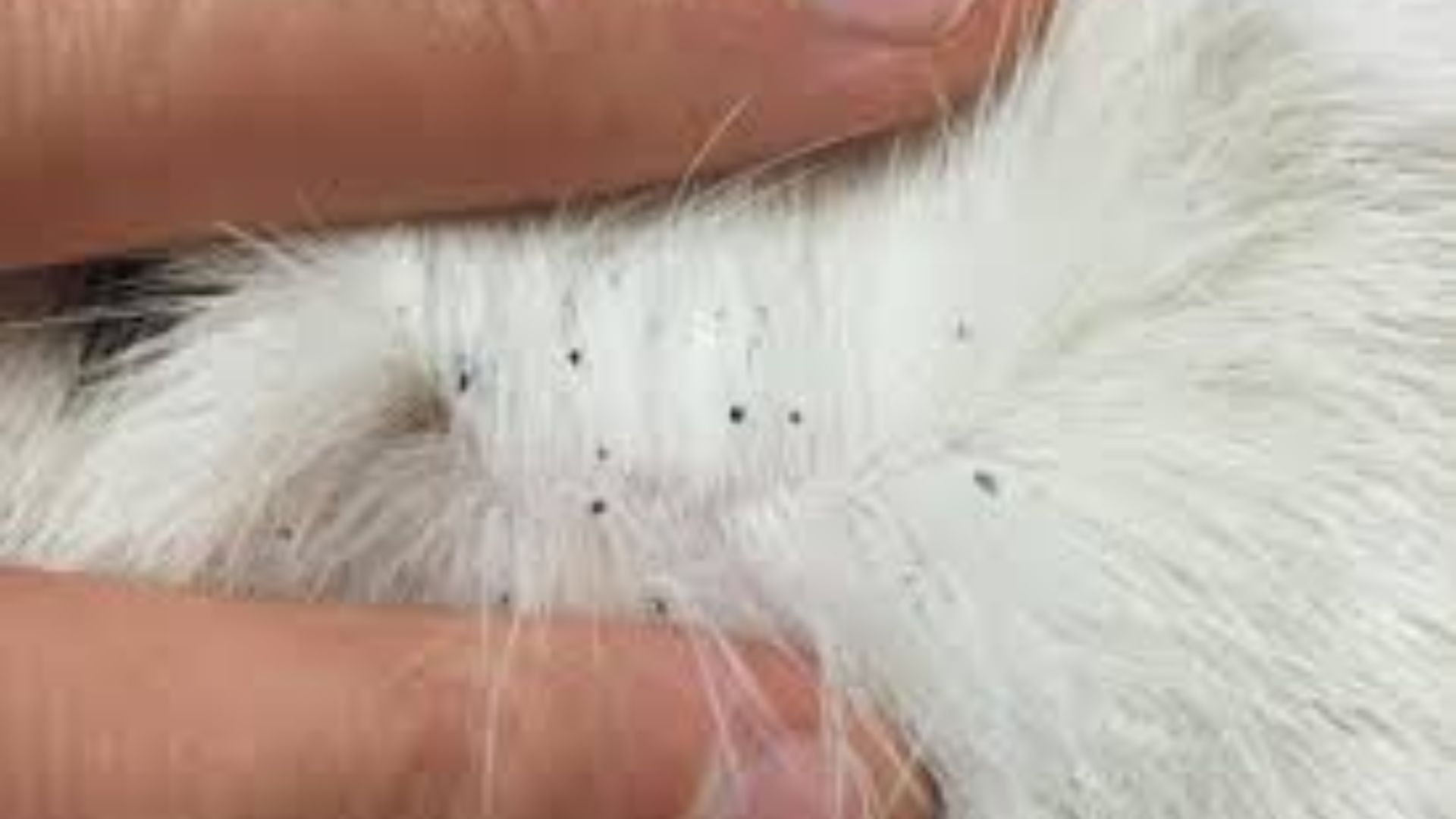
How to Get Rid of Fleas on Cats: A Comprehensive Guide
Table of Contents
Fleas are a common problem for cats, causing discomfort and potential health issues. These tiny parasites feed on the blood of their hosts and can reproduce rapidly, leading to an infestation.
In this article, we will explore the signs of fleas on cats, the best flea treatments, and how to eliminate fleas from your home.
Signs that your cat has fleas
Cats are thorough groomers, making it difficult to spot fleas. However, there are several signs to look out for:
1. Frequent scratching: This is one of the most common signs of fleas on cats. Fleas cause itching, leading to excessive scratching, especially around the neck, back, and base of the tail.
2. Licking, chewing, or excessive grooming: Cats may lick or chew their skin in an attempt to eliminate the itchy sensation, which can lead to hair loss and skin damage.
3. Hair loss or bald spots: Excessive grooming can result in hair loss, particularly around the hind legs, neck, and base of the tail.
4. Skin redness, rashes, scabs, wounds, or other lesions: These symptoms can be a result of the cat’s reaction to flea bites, which can cause inflammation and infection.
5. Flea dirt: Flea dirt, or flea droppings, looks like finely ground black pepper. It can be found on your cat, in their bedding or cat tree, in the furniture, or anywhere your pet spends time. To confirm if it’s flea dirt, place some on a white paper towel and spray with water. Wet flea dirt will turn red or reddish-brown.
6. Flea bites: Flea bites on cats can appear as pink bumps or clusters of bumps grouped together, often accompanied by a rash (flea allergy dermatitis) or scabs due to excessive scratching.
7. Agitation, edginess, and restlessness: Flea irritation can cause behavioural changes, such as growling, shaking the head, aggressively rubbing the head and body on the floor, or darting from one end of the room to the other.
8. Muscle loss, pale gums, and lethargy: In severe cases, fleas can cause anaemia, which is low red blood cell count. This can be indicated by muscle loss, pale gums, and lethargy.
If you suspect your cat has fleas, use a flea comb to brush your cat and observe if any fleas jump out or if there are flea droppings present.
Best Flea Treatment for Cats
Consult with your veterinarian for the best flea treatment for your cat. They can administer products that kill fleas on the animal within a day. After treatment, they will likely recommend using a good tick and flea preventative to maintain protection. These include topical, spot-on treatments like Frontline and Advantage or chewable tablets.
Home Remedies for Fleas on Cats
In addition to veterinary care, you can help your cat with these at-home treatments:
1. Flea Bath: Use Dawn dish detergent or a reputable brand of flea shampoo for a flea bath. Consult your veterinarian first to ensure compatibility with any flea preventatives you’re using.
2. Flea Comb: Use a flea comb to remove fleas and flea eggs. Dip the comb into hot, soapy water after each pass to remove any trapped parasite. Comb in the direction of hair growth and repeat several times daily for optimal results.
Eliminating Fleas in Your Environment
To eliminate fleas in your environment, follow these guidelines from the Environmental Protection Agency:
1. Vacuum floors, furniture, and areas your pet frequents daily.
2. Seal and dispose of the vacuum bag.
3. Steam clean carpets to kill lingering fleas.
4. Wash pet and family bedding in hot, soapy water every two weeks.
Preventing Future Flea Infestations
To prevent future flea infestations, maintain your cat and any other pets on a monthly preventative. This will protect them from reinfection.
In conclusion, fleas can be a significant nuisance for cats, but with the right treatment and preventative measures, you can help your feline friend live a flea-free life. Consult with your veterinarian for the best course of action and remember to be persistent in your efforts to eliminate and prevent fleas.
Some natural remedies for flea prevention in cats
Fleas can be a significant problem for cats, causing discomfort and potential health issues. While there are many effective anti-parasitic products available on the market, some cat owners prefer natural remedies for flea prevention. Let’s explore various natural remedies for flea prevention in cats, their effectiveness, and any potential risks associated with their use.
1. Bathing Your Cat: A bath with a gentle, cat-safe shampoo can help remove fleas from your cat’s fur. While this is not a long-term solution, it can provide temporary relief. Combing your cat’s fur with a flea comb during the bath can help remove fleas and their eggs.
2. Vacuuming: Regular vacuuming can help eliminate flea eggs in your home. Make sure to vacuum carpets, furniture, and areas where your cat spends time. Empty the vacuum bag outside your home to prevent re-infestation.
3. Combing Your Cat’s Fur: Regularly combing your cat’s fur with a flea comb can help remove fleas and their eggs. This is especially effective when combined with a bath. Make sure to dispose of the fleas and eggs in soapy water to prevent re-infestation.
4. Non-toxic Traps: Placing bowls of warm soapy water or using electric traps can help eliminate fleas in your home. Fleas are attracted to the heat and drown in the soapy water.
5. Diatomaceous Earth: This natural powder made from fossilised algae can be sprinkled in your home and on your cat’s bedding. It dehydrates and kills fleas on contact. However, it is essential to use food-grade diatomaceous earth and avoid inhaling it, as it can be harmful to humans and pets.
6. Lemon Juice: Adding lemon juice to your cat’s water or using it as a rinse after bathing can help repel fleas. However, it is essential to dilute the lemon juice, as undiluted lemon juice can be harmful to cats.
7. Essential Oils: Some essential oils, such as rose geranium oil, can repel fleas. However, it is essential to use caution when using essential oils around cats, as they can be toxic to them.
Please note that some natural remedies, such as essential oils, can be toxic to cats, and it is essential to use them correctly. Additionally, natural remedies may not be as effective as antiparasitic products, especially in cases of severe infestations.
It is essential to maintain a clean home, regularly groom your cat, and consult with your veterinarian to ensure your cat’s health and well-being.
The different types of flea treatments for cats
The different types of flea treatments for cats include:
1. Topical Solutions: These are liquids applied to a specific area on the cat’s skin and can last for about a month. Examples include Revolution, Cheristin for Cats, and Advantage II.
2. Oral Medications: Oral flea medications work from the inside out and are usually given monthly for effective flea control. Comfortis is an example of an oral flea treatment for cats.
3. Flea Collars: Flea collars are worn around the cat’s neck to provide continuous flea prevention. Seresto is a common flea collar that protects against fleas for up to 8 months.
4. Flea Sprays: Flea sprays are applied directly onto the cat and can be effective for longer than 30 days. It is important to read the label and apply the spray correctly, especially around the head and eye area.
5. Oral Solutions: Oral treatments come in the form of capsules or tablets and are ingested by the cat. These treatments work by the active ingredient being absorbed from the gut and into the bloodstream, killing fleas when they bite the cat. Examples include VetIQ’s flea guard tablets.
These various flea treatments offer cat owners options to effectively control and prevent flea infestations, each with its own method of application and duration of effectiveness.
How often should you bathe your cat to prevent fleas
Some flea treatments, such as Advantage for Cats, can be applied to a dry cat and remain effective even after bathing with a soap-free shampoo. This suggests that bathing a cat with a soap-free shampoo after applying a flea treatment may not significantly impact its effectiveness.
It is important to note that flea treatments should be applied as directed by the product’s instructions and the advice of a veterinarian. Bathing a cat too frequently can lead to dry skin and other health issues, so it is best to follow a regular bathing schedule that is appropriate for your cat’s specific needs and health status.


